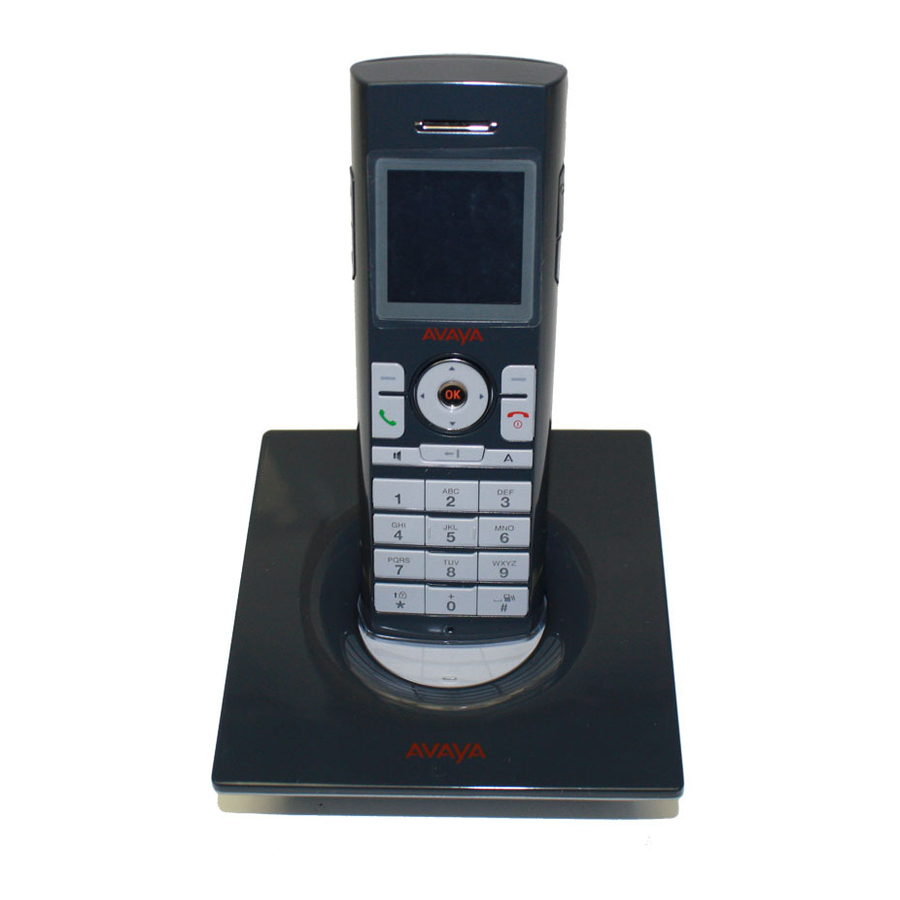- ページ 8
電話 Avaya 3645のPDF インストレーション・マニュアルをオンラインで閲覧またはダウンロードできます。Avaya 3645 19 ページ。 Co-existence with ip wireless handset offering
Avaya 3645 にも: クイック・リファレンス・マニュアル (2 ページ), 設定マニュアル (8 ページ)

Installation Guide
2.3.4 Multi-path and Signal Distortion
Multipath distortion is a form of RF interference that occurs when a radio signal has more than one
path between the transmitter and the receiver causing multiple signal wave fronts to be heard at the
receiver. This is typically caused by the radio signal reflecting off physical barriers such as metal
walls, ceilings and other structures and is a very common problem in factories and storage
environments. Multiple converging wave fronts may be received as either an attenuated or amplified
signal by the receiver. In some instances, if the signals arrive exactly out of phase, the result is a
complete cancellation of any signal.
Multipath can cause severe network throughput degradation because of high error rates and packet
retries. This in turn can lead to severe voice quality issues with Avaya wireless telephones. Correctly
locating antennas and choosing the right type of antenna can help reduce the effects of multipath and
interference.
Diversity antennas should be used to help improve performance in a multipath environment. A
diversity solution uses two antennas for each radio, and will send and receive signals on the antenna
which is receiving the best signal. This greatly increases the probability that both the AP and the client
will receive a better signal quality in multipath environments. Most access points support receive
diversity in that they receive on the antenna that is getting the best signal, but some also support full
transmit diversity where the transmission is made on the same antenna that was last used to receive a
signal from that specific client. Avaya recommends the use of APs supporting both receive and full
transmit diversity where multipath is an issue in order to provide optimal voice quality.
Access point antennas should not be placed near a metal roof, wall, beam or other metal obstruction
in a multipath environment, as this will amplify the reflection effects. Additionally, antennas should be
positioned so that they have a line of site to most of the clients that they service. Additional
instructions from the wireless network infrastructure vendor should be followed with regard to antenna
selection and placement to provide correct diversity operation.
2.3.5 Site Surveys
A wireless site survey is highly recommended for any wireless network deployment. However it is
especially critical when voice is an application on the network and is essential for large or complex
facilities. A site survey can ensure that the wireless network is optimally designed and configured to
support voice by confirming RF coverage, cell overlap, channel allocation/reuse, packet transmission
quality and other deployment considerations. While many tools exist that allow customers to perform
their own assessment, Avaya recommends a professional site survey to ensure optimum coverage
and minimum interference.
To verify coverage of an installed Wi-Fi network, Avaya wireless telephones offer a site-survey mode
that can be used to ensure the AP locations and configurations are both correct and adequate. This
mode detects the strongest AP signals and displays the signal strength along with the AP channel
assignments. The site survey mode may be used to detect areas with poor coverage or interfering
channels; check for rogue APs' confirm the Extended Service Set Identification (ESSID) and data
rates of each AP; and detect AP configuration problems. With Avaya wireless telephones, the entire
coverage area must be checked to ensure that at least one access point's output meets the signal
strength requirements summarized in Section 2.1.2 of this document. If the site-survey mode
indicates that two APs are using the same channel, then at least one other different AP must be
indicated at 10 dBm stronger than those APs, to avoid channel conflicts.
After a site survey is complete, coverage issues can be resolved by adding and/or relocating APs.
Overlap issues may be resolved by reassigning channels or by relocating some access points. When
adjustments are made to the WLAN configuration, an additional site survey should be performed to
ensure that the changes are satisfactory and have not had adverse impact in other areas of coverage.
The maximum number of simultaneous telephone calls an AP can support is determined by dividing
Octiober 2008
8
